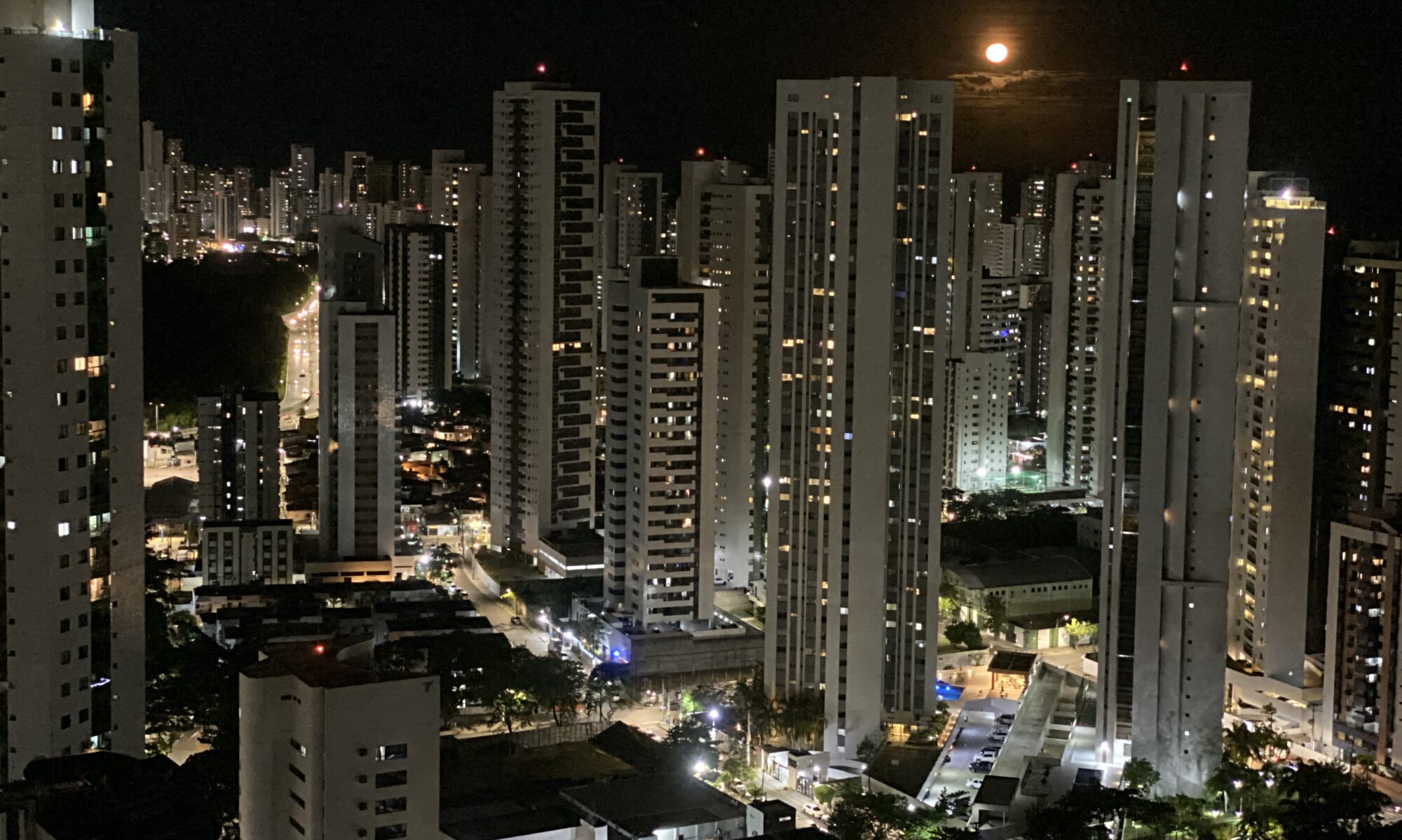- Biological Reserves
- National System of Conservation Units (SNUC)
- Non-Governmental Environmentalist Organizations
- Registered Natural Areas and Other Protected Areas
The first effort of any significance made in Brazil to join the international movement to create protected nature reserves was in 1911. The driving force behind it was Luis Felipe Gonzaga, a Brazilian scientist who, that same year, published a book entitled “Map of Brazilian Forests” (“Mapa Florestal do Brasil”), which, as the name suggests, included a map to the scale 1:5,000,000. Since then, thirty-five National Parks, twenty-three Biological Reserves, six Ecological Reserves and twenty-one Ecological Stations have been created in Brazil, covering a total of fifteen million hectares of land protected at national level. If to this were added all the designated Conservation Units within the states and administrative districts, without counting those that are in private ownership, the total would reach more than five hundred million hectares!
The “Map of Brazilian Forests” was the first comprehensive study carried out in Brazil to include a detailed description of the different ecosystems and the level of conservation in each one, with the express intention of furnishing information to Brazilian authorities in order to create a network of national parks. As had been happening in other countries, the aim was to preserve the natural beauty and fine examples of nature whilst they were still intact and before being destroyed to make way for human development. These were the same objectives that inspired the creation of the Yellowstone National Park in the USA.
Following the publication of the “Map of Brazilian Forests”, that has since become a classic, decrees were passed by the President of the Republic creating two national parks in the territory of Acre, nowadays a state of the federation. At the beginning of the century, this initiative was such an advanced concept that the decrees were completely forgotten and the national parks never came into being. Only in recent years were those legal documents unearthed and it was discovered that the first parks had been almost completely destroyed as nothing had been done to preserve them. Just a small part of one of them was saved to form part of the present day River Acre Ecological Station.
It was only in the 1930s that Brazil’s first national park was created. The Itatiaia National Park is situated in the Mantiqueira mountain range, on the border between the states of Rio de Janeiro and Minas Gerais, nowadays considered to be the first natural area in Brazil to be protected.
Following the creation of Itatiaia, a native name meaning needles of stone, referring to the rock formations on its peak that are furrowed by glaciation, three further parks were created during the same decade: the Iguaçu National Park, the Sete Quedas National Park and the Serra dos Órgãos. The first was intended to protect one of the planet’s most magnificent cataracts; the second was to protect waterfalls just as spectacular as the former and situated on the River Paraná bordering Paraguay. Unfortunately the “Sete Quedas” (Seven Waterfalls) were submerged by the construction of the Itaipu hydroelectric scheme, built during the military regime and following the withdrawal of the park’s national status. The third national park still protects a delightful stretch of Atlantic forest in the state of Rio de Janeiro where there is the famous stone formation known as “God’s Finger”.
During the Second World War, little was done in relation to the creation of new protected areas. However, shortly after war ended, the Brazilian Congress approved the signing of the Inter-American Convention for the Protection of Natural Beauty on the American Continent. Several new parks and areas with different special characters were created and slowly society became aware of the importance of preservation. The Biological Reserves and Forest Reserves (no longer in existence) came into being, for many years playing an important role in the protection of forests where economic exploitation was permitted. It is encouraging that some states have also started to attach greater importance to the setting up their own conservation areas, increasing the number and area of reserves protected.
There was a surge in enthusiasm for the protection of nature in Brazil immediately after the first United Nations Conference on the Environment held in Stockholm, Sweden in 1972, leading to the creation of the Special Department for the Environment, known as SEMA. This new federal department, headed by the biologist Paulo Nogueira-Neto, instigated a new and important category of protected area, the Ecological Station. Soon afterwards, early in the 1980s, SEMA succeeded in getting a law passed to introduce yet another category of protected area: the Environmental Protection Area (APA), representing a revolution in the concept of protected areas in Brazil up to that time.
APAs can be designated in relation to both public land and private property and offer various innovations in ways of standing up for nature. Their inspiration came from a type of protected area in Europe, the nature park which is also related to the Biosphere Reserve put forward in Unesco’s scheme, Man and the Biosphere (MAB), which was implemented by a number of countries before being taken up by Brazil. Because of resistance on the part of the Brazilian military regime to any form of foreign interference, it was not possible to take part right from the beginning of this scheme, but nowadays in the same spirit, Brazil has the Mata Atlântica Biosphere Reserve.
Another revolution took place a decade later with the creation of another category of protected area in the form of the Extractivist Reserve. This new type of conservation area has a function that is completely different from that of the previous categories. It covers protected areas that are government property and are for the purpose of promoting the stability of the ecosystem, ensuring its sustained use by means of a particular social group. The Extractivist Reserve was originally set up to guarantee work for rubber-tappers in Amazonia. They were well-supported by their leader, the trade unionist Chico Mendes and were legally constituted only after his murder in 1988, in recognition of his struggle on behalf of the forest-dwellers and the protection of nature. Nowadays, the concept of the Extractivist Reserve is well-accepted and may be adopted by other social groups concerned with the continued survival of traditional culture in all regions of Brazil. Furthermore, this concept, which was originally developed in the Brazilian Amazon region, is now being tried in other countries where conditions are similar to those of Brazil.
From a legal point of view, there was another revolution in Brazil concerning protected areas which came about with the promulgation of the 1988 Constitution, when, for the first time, conservation areas were mentioned in a constitutional document. From then on, it was established that the State had an obligation to protect Brazil’s bio-diversity and that, in addition to the use of other methods, this would be achieved by the creation of protected areas throughout the country. Furthermore, the Constitution states that those areas can only be modified, subsidized or reduced by legal means. This is a major step in the reinforcement of Brazil’s project for nature conservation.
Also in relation to the law is a new initiative being discussed in the Federal Chamber for the approval of a National System for Conservation Areas (SNUC). The aim of this scheme, put forward by specialists in the sector, is to organize, at national level, the classification and the designation of protected areas in Brazil so that they can form an effective and coherent whole and achieve their allotted objectives. The National System is based on the categories of protected areas established by the International Union for Nature Conservation which is the classification method most widely accepted at an international level. It is part of the system put forward for the permanent evaluation of the progress achieved in setting up and preserving conservation areas and addresses one of the main problems: the fact that the majority of them exist only as legal entities. The situation is so serious that the areas have become known as “parks on paper”.
Another aspect in which the National System should make a contribution is in the assessment of areas, regions and ecosystems within Brazil that are now adequately protected and those which require the urgent creation of new areas to ensure their protection. Today, the Mata Atlântica has more than two hundred and fifty areas that are officially protected, whilst the semi arid lands of the Caatinga, so-named by Brazilian natives meaning dense forest, has only a dozen. These two ecosystems need more protected areas but the second one requires greater short-term effort. In addition to categories established by the National System, there are other forms of nature conservation, such as registered natural areas and other protected areas, that deserve more attention.
To summarize, the Brazilian system of conservation units forms an impressive whole that is of enormous value from a cultural, economic and scientific point of view and includes different systems for organizing nature conservation, covering enormous areas with landscapes of indescribable beauty. These gifts of nature, precious examples of earthly paradise, protect Brazil’s fauna and flora – the most biologically diverse in the world. Despite its position as one of the planet’s most wide-ranging protection systems, reinforcement is constantly required. There has been an increasing level of international co-operation towards the consolidation of this system. By means of non-governmental environmental organizations, Brazilian public opinion, the authorities and society in general have been giving their increasing support but, even so, a greater effort and higher priority at both national and international level are necessary to ensure the survival of some of the most spectacular countryside with which nature has endowed Brazil.




